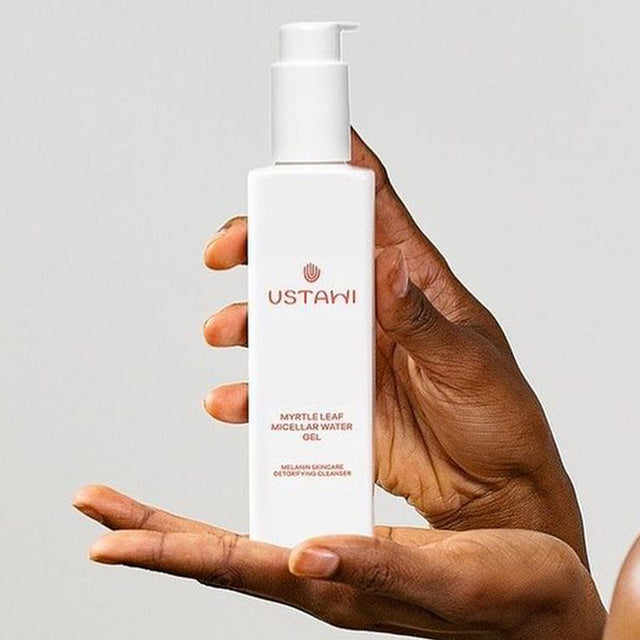Versine Founder Jennie Gao Discusses Pesky Dark Spots that Can Appear During Pregnancy and Beyond
When Versine founder Jennie Gao created her skincare line with a focus on OBGYN and dermatologists-approved products for pregnant and nursing women, she knew her serums had to target hyperpigmentation. For approximately 50-70% of women, the hormonal surge during pregnancy causes melasma – blotchy, pigmented patches of skin on the face. So much for the famed “pregnancy glow!”
It also turns out that melasma, like other forms of hyperpigmentation, is more prevalent in women of color.
Not to worry. Melasma often (though not always) gets better after pregnancy, and there are ways to prevent and treat it. In fact, the ingredients and procedures used to treat melasma generally coincide with those used to treat hyperpigmentation, so it’s possible to kill two birds (or skin issues) with one stone.
Below, Jennie speaks to Dr. Suchismita Paul, board-certified, Harvard-trained dermatologist, Versine medical advisor, and an all-around dynamo, who specializes in skin of color. Together, they lay out the details necessary to successfully battle pesky dark spots, whether from pregnancy or squeezing your pimples (which surely you do not).
Jennie
What is hyperpigmentation? What are some common causes?
Dr. Paul
Hyperpigmentation, commonly known as dark spots or brown spots, results when the skin appears darker than the normal skin surrounding it. Hyperpigmentation occurs due to extra deposition of melanin, the pigment that gives skin its color.
Many things can cause hyperpigmentation. Some common causes are chronic sun exposure, melasma, medications and post-inflammatory hyperpigmentation (PIH). PIH is the appearance of dark spots after skin inflammation, such as eczema or acne. Melasma is a form of brown or grey/black discoloration on the cheeks, forehead, upper lips, resulting from genetics, sun exposure, or hormonal changes.
Jennie
Why do hyperpigmentation and melasma disproportionately impact POC?
Dr. Paul
Skin of color produces melanin pigment more easily than lighter skin. Melanocytes are the cells that produce melanin pigment. Though all skin colors have the same number of melanocytes, the quantity and size of melanosomes (the structures that hold melanin) in melanocytes differ. In darker skin tones, melanosomes are larger and more numerous, and hence produce more melanin, which can lead to higher hyperpigmentation in skin of color.
Jennie
Is there any difference in how to treat melasma versus hyperpigmentation from other causes?
Dr. Paul
Both can be treated using topical creams or more aggressive measures. With melasma, light to dark brown color is suggestive of superficial skin involvement, and can be treated using topical creams. Blue gray/black color means deeper skin involvement, and laser treatment is more appropriate.
Jennie
What are some other topical products / ingredients we can use to minimize hyperpigmentation? In our signature serums, we use multiple ingredients, like Vitamin C, azelaic acid, and niacinamide, to combat hyperpigmentation.
Dr. Paul
There are several over-the-counter products available to treat hyperpigmentation. In general, combination therapy may be more effective than single treatment therapy. Some great options are, as you noted, Vitamin C, azelaic acid, and niacinamide. Other options with clinical backing are:
- Retinol/retinoids
- Tranexamic acid
- Alpha Hydroxy acids (e.g., glycolic acid, lactic acid, mandelic acid)
- Beta Hydroxy acids (i.e., salicylic acid)
- Kojic acid
- N-acetyl glucosamine
- Soy
- Licorice
- Arbutin
Jennie
Are there any ways of preventing melasma and hyperpigmentation?
Dr. Paul
The best way to prevent melasma or any form of hyperpigmentation is to protect our skin from prolonged sun exposure.
When it comes to sunscreens, it’s important to use “broad-spectrum” sunscreen with both UVA and UVB coverage, with SPF 30 or higher. Tinted sunscreens also have iron oxide, which protects from visible light, another known cause of hyperpigmentation in those with darker skin.
Also, avoid picking pimples, as that causes trauma, and therefore more pigmentation!
Jennie
Hydroquinone has historically been the go-to topical treatment for hyperpigmentation, but it’s also quite controversial. Can you explain why?
Dr. Paul
Hydroquinone is FDA-approved in the United States, and the consensus among dermatologists is that it is safe and effective for the treatment of hyperpigmentation. However, due to concerns over unsupervised over-use, it is now no longer available OTC in the US. It is also not safe during pregnancy and should be avoided during that time.
Jennie
Are there any procedures or other methods (oral meds, etc.) that can help with melasma and hyperpigmentation?
Dr. Paul
There are oral medications, such as Tranexamic acid, which is mainly used to reduce pigmentation in melasma. There are also office procedures such as chemical peels and laser treatment that can reduce hyperpigmentation.
Jennie
What ingredients / procedures for hyperpigmentation should you avoid when pregnant?
Dr. Paul
Hydroquinone, retinoids, arbutin, oral Tranexamic acid, salicylic acid peels, laser treatment should be avoided during pregnancy. The safest ingredients are azelaic acid and Vitamin C.







